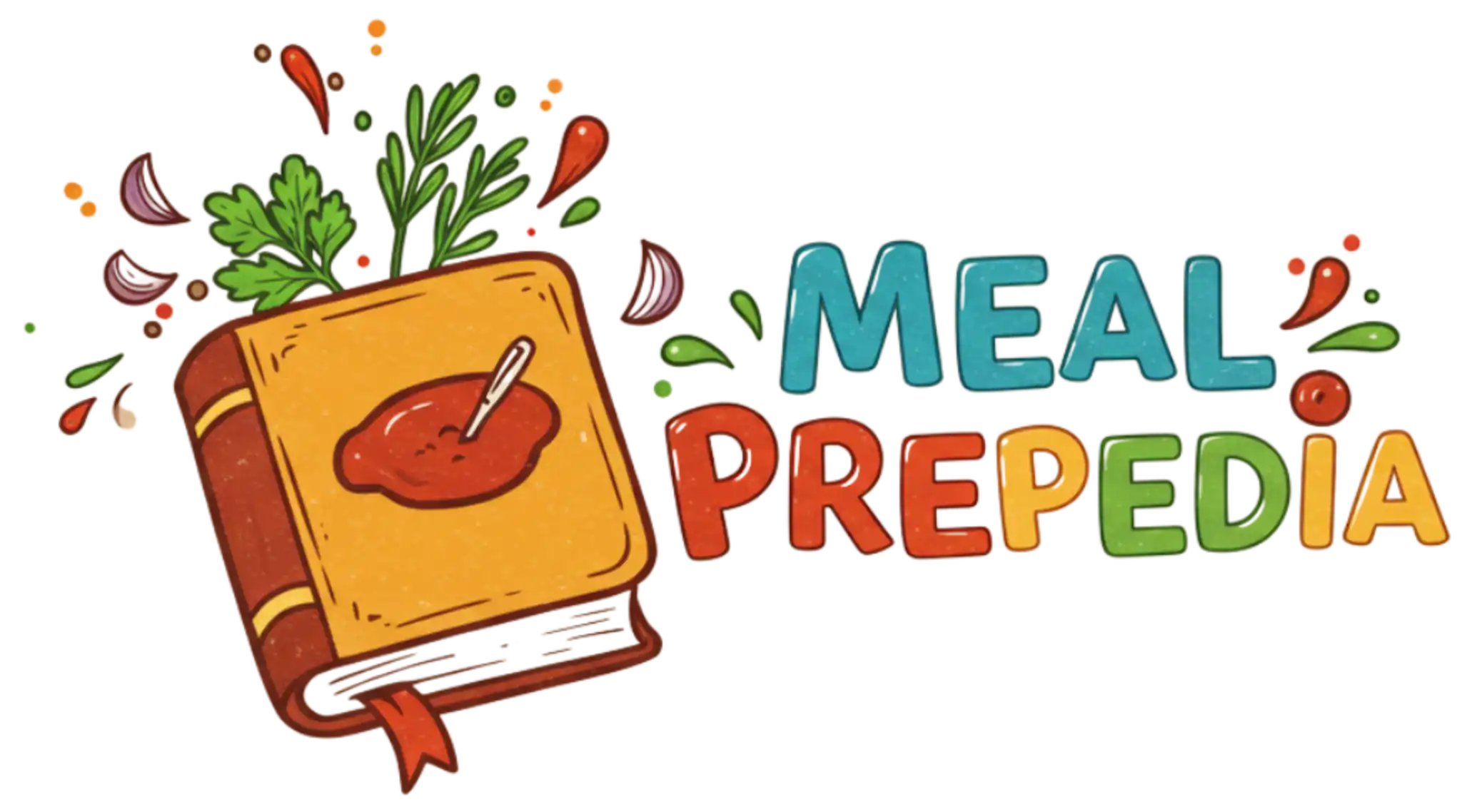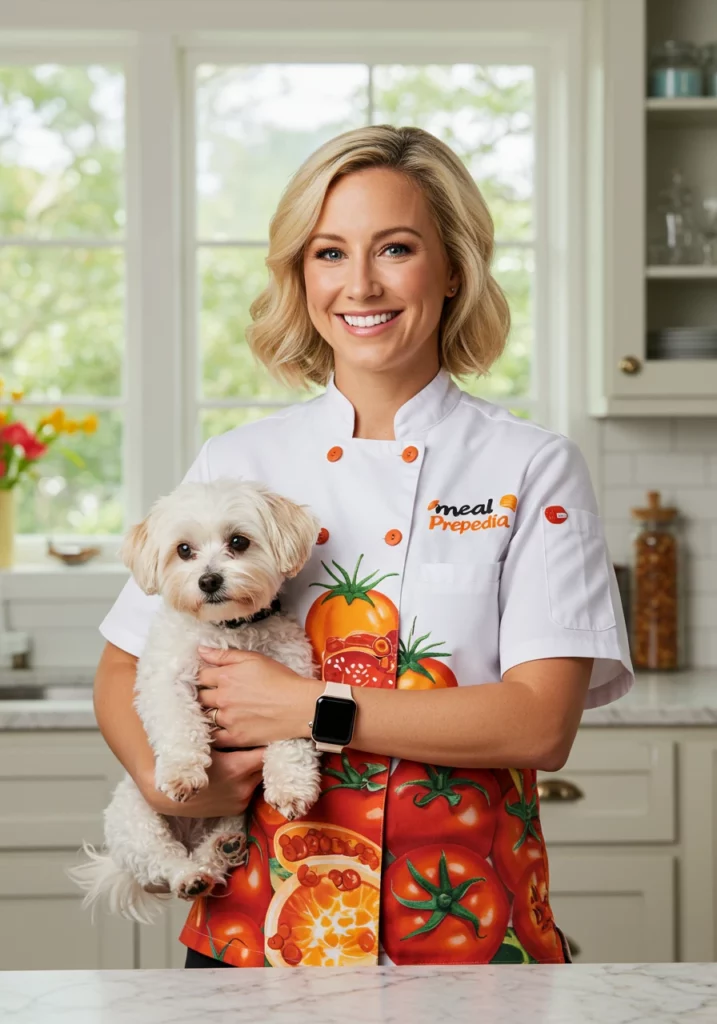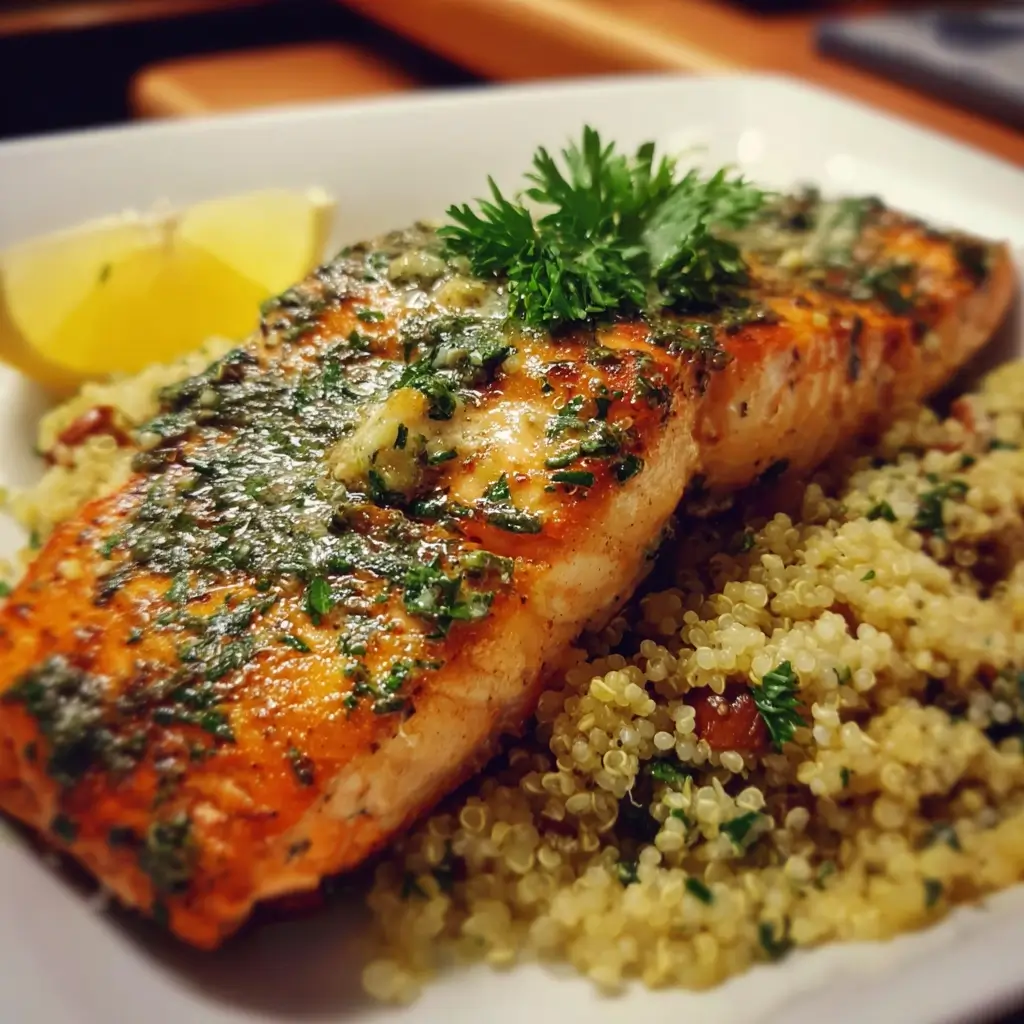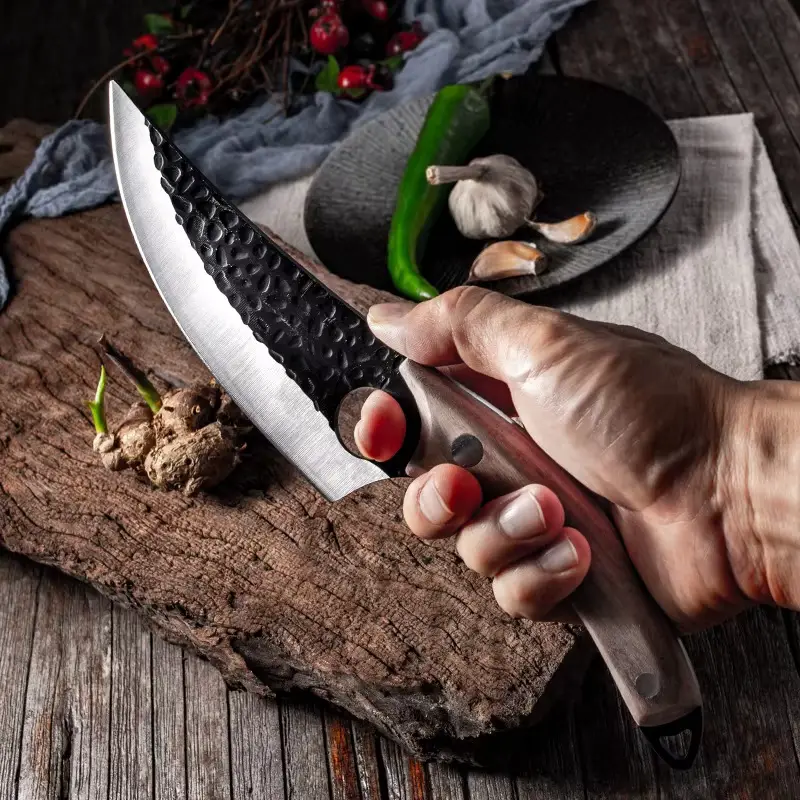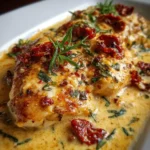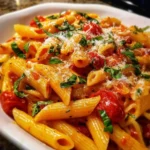Finding a meal that is both profoundly healthy and genuinely exciting can feel like a culinary quest. For the longest time, my weeknight dinner rotation was a predictable cycle of the same old reliable, but uninspired, dishes. I was searching for a showstopper—something vibrant, flavorful, and packed with goodness that wouldn’t keep me in the kitchen for hours. That’s when this Herbed Salmon with Quinoa Pilaf entered my life, and I can honestly say, it changed everything. The first time I made it, the aroma alone was enough to draw my family into the kitchen. The fragrant scent of fresh dill and parsley mingling with zesty lemon and garlic-infused quinoa filled the house with a promise of something special. When I brought it to the table, the beautiful colors—the rosy-pink of the perfectly cooked salmon, the jeweled tones of the vegetables in the pilaf, and the fresh green of the herbs—were met with audible gasps. The verdict? An overwhelming success. It was devoured, with requests for seconds all around. This dish has since become our celebrated staple, a meal that feels like a five-star restaurant experience but comes together with the ease of a beloved home-cooked recipe. It’s our go-to for a healthy reset, a special occasion, or just a Tuesday night when we need a little extra deliciousness in our lives.
Why This Herbed Salmon and Quinoa Pilaf Will Become Your New Favorite
Before we dive into the nuts and bolts of the recipe, let’s talk about why this particular dish is so exceptionally good. It’s more than just a set of instructions; it’s a formula for a perfect meal that balances nutrition, flavor, and simplicity.
First and foremost, it’s a powerhouse of nutrition. Salmon is renowned for its high concentration of omega-3 fatty acids, which are crucial for brain health, reducing inflammation, and supporting a healthy heart. Paired with quinoa, a complete protein that provides all nine essential amino acids, you have a meal that is incredibly satisfying and sustaining. Quinoa is also a fantastic source of fiber, magnesium, and iron, making the pilaf base not just a tasty side, but a nutritional cornerstone of the dish.
The flavor profile is second to none. The combination of fresh herbs—specifically dill, parsley, and chives—creates a bright, zesty, and aromatic crust for the salmon. This isn’t a heavy, overpowering seasoning; it’s a fresh and elegant blanket of flavor that complements the rich, buttery texture of the fish. The lemon juice and zest cut through the richness, adding a layer of acidity that makes every bite pop. The quinoa pilaf is no mere afterthought. Sautéing the aromatics like garlic and onion first builds a deep, savory foundation. The vegetable broth infuses the quinoa with a much richer taste than plain water ever could, and the colorful bell peppers add a subtle sweetness and a delightful texture.
Finally, its versatility and ease of preparation make it a true kitchen hero. While it looks and tastes incredibly sophisticated, the steps are straightforward and manageable for cooks of all skill levels. It’s quick enough for a busy weeknight, taking just over half an hour from start to finish, yet it’s elegant enough to serve to guests at a dinner party. You can easily customize the vegetables in the pilaf based on what’s in season or what you have in your fridge, and the herb blend for the salmon can be adapted to your personal taste. This recipe isn’t just a meal; it’s a template for healthy, delicious, and stress-free cooking.
Ingredients
Here is everything you will need to create this stunning and nutritious meal. Each component is chosen for its specific contribution to the final flavor and texture, creating a symphony of taste in every bite.
For the Quinoa Pilaf:
- 1 tbsp Olive Oil: The base for sautéing our aromatics, adding a smooth, fruity note.
- 1 small Yellow Onion, finely chopped: Provides a sweet, savory foundation for the pilaf.
- 2 cloves Garlic, minced: Adds that essential, pungent aroma and depth of flavor.
- 1 Red Bell Pepper, diced: Lends a beautiful color, a slight sweetness, and a pleasant crunch.
- 1 cup Uncooked Quinoa, rinsed: The star of the pilaf, this ancient grain becomes light and fluffy, absorbing all the surrounding flavors. Rinsing removes its natural bitter coating (saponin).
- 2 cups Vegetable or Chicken Broth: Used as the cooking liquid for a much more flavorful and savory result than water.
- 1/2 tsp Salt: To enhance all the flavors in the pilaf.
- 1/4 tsp Black Pepper: For a touch of gentle spice.
For the Herbed Salmon:
- 4 (6-ounce) Salmon Fillets, skin-on or skinless: The centerpiece of the dish. Look for vibrant, firm fillets.
- 2 tbsp Olive Oil: To help the herbs adhere to the fish and ensure it doesn’t stick to the pan.
- 1/4 cup Fresh Dill, finely chopped: Brings a distinct, slightly anise-like, fresh flavor that is classic with salmon.
- 1/4 cup Fresh Parsley, finely chopped: Adds a bright, clean, and slightly peppery taste that lightens the dish.
- 2 tbsp Fresh Chives, finely chopped: Offers a delicate oniony flavor without being overpowering.
- 1 Lemon, zested and juiced: The zest is mixed with the herbs for an intense lemon aroma, and the juice is used to finish the dish with bright acidity.
- 1/2 tsp Salt: Essential for seasoning the fish.
- 1/4 tsp Black Pepper: To complement the salt and herbs.
Instructions
Follow these step-by-step instructions for a flawless Herbed Salmon with Quinoa Pilaf. We’ll prepare the pilaf first, as it can simmer while you cook the salmon, making for an efficient and well-timed meal.
Part 1: Creating the Flavorful Quinoa Pilaf
- Sauté the Aromatics: Place a medium-sized saucepan or pot over medium heat. Add the 1 tablespoon of olive oil. Once the oil is shimmering, add the finely chopped yellow onion and diced red bell pepper. Sauté for 4-5 minutes, stirring occasionally, until the onion becomes translucent and the pepper begins to soften. This step builds the crucial first layer of flavor.
- Toast the Garlic and Quinoa: Add the minced garlic to the pot and cook for another minute until fragrant. Be careful not to let it burn. Add the rinsed quinoa to the pot. Stir continuously for about 1-2 minutes to toast the grains. This toasting step enhances the quinoa’s natural nutty flavor and helps it cook up fluffier.
- Simmer to Perfection: Pour in the 2 cups of vegetable or chicken broth. Add the 1/2 teaspoon of salt and 1/4 teaspoon of black pepper. Stir everything together and bring the liquid to a boil.
- Cook and Rest: Once boiling, immediately reduce the heat to the lowest setting, cover the pot with a tight-fitting lid, and let it simmer for 15 minutes. After 15 minutes, turn off the heat but leave the pot covered on the stove for another 5-10 minutes. Do not peek! This resting period is critical, as it allows the quinoa to steam and absorb the last bits of moisture, resulting in perfectly separated, fluffy grains.
Part 2: Cooking the Perfect Herbed Salmon
- Prepare the Herb Topping: While the quinoa is simmering, prepare the salmon. In a small bowl, combine the finely chopped fresh dill, parsley, chives, and the zest of one lemon. Add the 1/2 teaspoon of salt and 1/4 teaspoon of black pepper. Mix well to create your vibrant herb crust.
- Season the Salmon: Pat the salmon fillets completely dry with a paper towel. This is a key step for getting a good sear. Brush the flesh side of each fillet with olive oil, then generously press the herb mixture onto the top of each piece, ensuring an even coating.
- Sear the Salmon: Heat the remaining 2 tablespoons of olive oil in a large non-stick or cast-iron skillet over medium-high heat. Once the oil is hot and shimmering, carefully place the salmon fillets in the pan, skin-side down (if using skin-on). If using skinless fillets, place them herb-side up.
- Cook to Flaky Perfection: Cook for 4-6 minutes on the first side, depending on the thickness of your fillets. You’ll see the color change and creep up the sides of the fish. For crispy skin, avoid moving the fillets during this time. Flip the salmon carefully and cook for another 3-5 minutes on the other side. The salmon is done when it is opaque and flakes easily when gently pressed with a fork. Avoid overcooking to keep it moist and tender.
- Finish with Lemon: Remove the skillet from the heat. Squeeze the juice from the reserved lemon over the cooked salmon fillets.
Part 3: Assembling the Dish
- Fluff the Quinoa: After the quinoa has rested, remove the lid and use a fork to gently fluff the grains, incorporating the vegetables.
- Serve Immediately: Spoon a generous portion of the quinoa pilaf onto each plate. Carefully place a beautiful herbed salmon fillet on top or alongside the pilaf. Garnish with an extra sprig of dill or a lemon wedge if desired.
Nutrition Facts
This meal is designed to be as nourishing as it is delicious. Here’s a breakdown of its key nutritional benefits.
(Estimates are per serving, based on a 4-serving yield).
- Servings: 4
- Calories per serving: Approximately 550 kcal
- High in Protein (Approx. 45g): The combination of salmon and quinoa delivers a substantial amount of high-quality protein, which is essential for muscle repair, immune function, and keeping you feeling full and satisfied long after your meal.
- Rich in Omega-3 Fatty Acids (Approx. 2500mg): Salmon is one of the best natural sources of EPA and DHA, omega-3 fats that are vital for brain health, reducing inflammation throughout the body, and supporting cardiovascular wellness.
- Excellent Source of Fiber (Approx. 7g): Quinoa and vegetables provide a healthy dose of dietary fiber, which aids in digestion, helps regulate blood sugar levels, and contributes to a feeling of fullness.
- Packed with B Vitamins: Salmon is loaded with a spectrum of B vitamins (B1, B2, B3, B5, B6, B9, and B12), which are critical for converting food into energy, creating and repairing DNA, and reducing inflammation.
- Good Source of Iron and Magnesium: Quinoa is a plant-based powerhouse of essential minerals. Iron is crucial for oxygen transport in the blood, while magnesium plays a role in over 300 biochemical reactions in the body, including nerve function and muscle control.
Preparation Time
This recipe is designed for efficiency, making it perfect for a weeknight meal without sacrificing elegance or flavor.
- Preparation Time: 15 minutes (chopping vegetables and herbs, preparing salmon)
- Cook Time: 20-25 minutes (pilaf and salmon cook simultaneously)
- Total Time: Approximately 35-40 minutes
The workflow is streamlined: you get the quinoa simmering and then use that cooking time to prepare and cook the salmon, ensuring everything is hot and ready to serve at the same time.
How to Serve
Presentation enhances the dining experience. Here are a few ways to serve your Herbed Salmon with Quinoa Pilaf to make it feel extra special.
- Classic Plating:
- Create a generous bed of the colorful quinoa pilaf in the center of the plate.
- Gently place the herbed salmon fillet directly on top, allowing the vibrant colors of the pilaf to peek out from underneath.
- Garnish with a fresh sprig of dill and a thin lemon wheel on the side for an elegant, restaurant-quality look.
- Family-Style Serving:
- For a more casual, communal meal, spread the quinoa pilaf on a large platter.
- Arrange the four salmon fillets over the top of the quinoa.
- Scatter some extra chopped fresh parsley over the entire platter and place a small bowl of lemon wedges in the center for everyone to serve themselves.
- Paired with Sides:
- Serve the salmon and quinoa alongside a simple side to round out the meal. Excellent choices include:
- Steamed or roasted asparagus with a drizzle of olive oil.
- A simple arugula salad with a light vinaigrette.
- Sautéed green beans with slivered almonds.
- Serve the salmon and quinoa alongside a simple side to round out the meal. Excellent choices include:
- For Meal Prep:
- Portion the quinoa pilaf into individual airtight containers.
- Place a salmon fillet next to the quinoa.
- Store a lemon wedge in each container to be squeezed over the meal just before eating to revive the flavors.
Additional Tips for Culinary Success
Take your dish from great to absolutely unforgettable with these eight professional tips and tricks.
- Achieve Perfectly Crispy Salmon Skin: For an incredible textural contrast, aim for crispy skin. Ensure the salmon skin is patted completely dry, the pan is sufficiently hot before the fish goes in, and you place it skin-side down first. Press gently on the fillet with a spatula for the first 20-30 seconds to prevent it from curling up and ensure even contact with the pan.
- Toast Your Quinoa for Deeper Flavor: Don’t skip the step of toasting the rinsed quinoa in the pot with the aromatics before adding the liquid. This simple, two-minute step evaporates any remaining water and lightly toasts the grains, unlocking a wonderfully nutty, earthy flavor that significantly enhances the finished pilaf.
- Don’t Fear the Thermometer: The biggest mistake when cooking fish is overcooking it. For guaranteed moist, flaky salmon every time, use an instant-read thermometer. Insert it into the thickest part of the fillet; it’s perfectly cooked when it reaches an internal temperature of 135-140°F (57-60°C). The fish will continue to cook slightly from residual heat after you remove it from the pan.
- Master the Art of Herb Substitution: While dill and parsley are a classic pairing for salmon, feel free to experiment! If you have other fresh herbs on hand, try using fresh basil, tarragon, or even a little bit of mint. A combination of tarragon and parsley will give it a sophisticated French flair.
- Embrace Make-Ahead Strategies: To save time on a busy night, you can do much of the prep in advance. The onion, bell pepper, and garlic can be chopped and stored in an airtight container in the fridge for up to two days. You can also mix the herb topping ahead of time. This turns a 40-minute recipe into a 20-minute assembly and cook job.
- Properly Store and Reheat Leftovers: Leftovers are fantastic! Store the salmon and quinoa in separate airtight containers in the refrigerator for up to 2 days. To reheat, it’s best to gently warm the salmon in a low-temperature oven (300°F/150°C) or in a covered skillet over low heat to prevent it from drying out. The quinoa can be easily reheated in the microwave.
- Add a Creamy Component: If you want to add another layer of texture and flavor, serve the dish with a dollop of plain Greek yogurt or a drizzle of a simple tahini-lemon sauce on the side. The cool creaminess is a wonderful contrast to the warm, herbed fish.
- Control the Liquid Ratio for Perfect Quinoa: The standard ratio for perfect quinoa is 1 part quinoa to 2 parts liquid. Resisting the urge to add more liquid is key to preventing a mushy result. Equally important is resisting the urge to lift the lid while it’s simmering and resting. Trust the process!
Frequently Asked Questions (FAQ)
Here are answers to some common questions you might have about this recipe.
1. Can I use frozen salmon for this recipe?
Absolutely! Frozen salmon is a convenient and excellent option. For the best results, thaw it completely before cooking. The safest way is to let it thaw overnight in the refrigerator. If you’re short on time, you can place the vacuum-sealed salmon in a bowl of cold water for about an hour, changing the water every 20 minutes. Once thawed, pat it completely dry before seasoning.
2. What other grains can I use instead of quinoa?
This recipe is very adaptable. If you don’t have quinoa or prefer another grain, you can easily substitute it. Farro, barley, or brown rice would work well, but you will need to adjust the cooking time and liquid amount according to the package directions. For a quicker option, couscous (especially pearled couscous) would be a delicious substitute.
3. I don’t have fresh herbs. Can I use dried herbs instead?
Yes, you can use dried herbs in a pinch, though fresh herbs will provide the best flavor. The general rule of thumb is to use one-third the amount of dried herbs as you would fresh. So, for this recipe, you would use about 1.5 to 2 teaspoons of each dried herb instead of the 1/4 cup fresh.
4. How do I know for sure when my salmon is cooked through without a thermometer?
The most reliable visual cue is the “flake test.” Take a fork and gently press it into the thickest part of the salmon fillet. If the fish is cooked, the flesh will easily separate into flakes. If it resists or looks very translucent and raw in the center, it needs a little more time. The color should be mostly opaque with just a hint of translucency in the very center.
5. Is this recipe gluten-free?
Yes, this recipe is naturally gluten-free. Salmon, quinoa, vegetables, herbs, and olive oil do not contain gluten. Just be sure to use a certified gluten-free vegetable or chicken broth if you have a celiac allergy or severe sensitivity.
6. Can I cook the salmon on the grill or in an air fryer?
Definitely! For grilling, preheat your grill to medium-high. Oil the grates well, and grill the salmon for 4-6 minutes per side, depending on thickness. For an air fryer, preheat it to 400°F (200°C). Place the seasoned salmon fillets in the basket (skin-side down if applicable) and cook for 7-10 minutes until cooked through.
7. My quinoa came out mushy. What did I do wrong?
Mushy quinoa is usually caused by one of three things: not rinsing it thoroughly (which can affect texture), using too much liquid, or overcooking. Be precise with the 1:2 quinoa-to-liquid ratio. Also, ensure you keep the lid on tight during the simmer and rest periods to allow it to steam properly rather than boil into mush.
8. What is the best type of salmon to buy for this recipe?
You have several great options. King (or Chinook) salmon is very rich and buttery. Coho is a bit milder. Sockeye has a deep red color and a stronger flavor. Atlantic salmon is the most common and has a mild, crowd-pleasing taste. Both wild-caught and sustainably farmed salmon work well. The most important thing is to choose a fillet that looks fresh, firm, and vibrant.
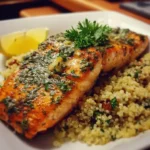
Herbed Salmon with Quinoa Pilaf
Ingredients
Here is everything you will need to create this stunning and nutritious meal. Each component is chosen for its specific contribution to the final flavor and texture, creating a symphony of taste in every bite.
For the Quinoa Pilaf:
- 1 tbsp Olive Oil: The base for sautéing our aromatics, adding a smooth, fruity note.
- 1 small Yellow Onion, finely chopped: Provides a sweet, savory foundation for the pilaf.
- 2 cloves Garlic, minced: Adds that essential, pungent aroma and depth of flavor.
- 1 Red Bell Pepper, diced: Lends a beautiful color, a slight sweetness, and a pleasant crunch.
- 1 cup Uncooked Quinoa, rinsed: The star of the pilaf, this ancient grain becomes light and fluffy, absorbing all the surrounding flavors. Rinsing removes its natural bitter coating (saponin).
- 2 cups Vegetable or Chicken Broth: Used as the cooking liquid for a much more flavorful and savory result than water.
- 1/2 tsp Salt: To enhance all the flavors in the pilaf.
- 1/4 tsp Black Pepper: For a touch of gentle spice.
For the Herbed Salmon:
- 4 (6-ounce) Salmon Fillets, skin-on or skinless: The centerpiece of the dish. Look for vibrant, firm fillets.
- 2 tbsp Olive Oil: To help the herbs adhere to the fish and ensure it doesn’t stick to the pan.
- 1/4 cup Fresh Dill, finely chopped: Brings a distinct, slightly anise-like, fresh flavor that is classic with salmon.
- 1/4 cup Fresh Parsley, finely chopped: Adds a bright, clean, and slightly peppery taste that lightens the dish.
- 2 tbsp Fresh Chives, finely chopped: Offers a delicate oniony flavor without being overpowering.
- 1 Lemon, zested and juiced: The zest is mixed with the herbs for an intense lemon aroma, and the juice is used to finish the dish with bright acidity.
- 1/2 tsp Salt: Essential for seasoning the fish.
- 1/4 tsp Black Pepper: To complement the salt and herbs.
Instructions
Follow these step-by-step instructions for a flawless Herbed Salmon with Quinoa Pilaf. We’ll prepare the pilaf first, as it can simmer while you cook the salmon, making for an efficient and well-timed meal.
Part 1: Creating the Flavorful Quinoa Pilaf
- Sauté the Aromatics: Place a medium-sized saucepan or pot over medium heat. Add the 1 tablespoon of olive oil. Once the oil is shimmering, add the finely chopped yellow onion and diced red bell pepper. Sauté for 4-5 minutes, stirring occasionally, until the onion becomes translucent and the pepper begins to soften. This step builds the crucial first layer of flavor.
- Toast the Garlic and Quinoa: Add the minced garlic to the pot and cook for another minute until fragrant. Be careful not to let it burn. Add the rinsed quinoa to the pot. Stir continuously for about 1-2 minutes to toast the grains. This toasting step enhances the quinoa’s natural nutty flavor and helps it cook up fluffier.
- Simmer to Perfection: Pour in the 2 cups of vegetable or chicken broth. Add the 1/2 teaspoon of salt and 1/4 teaspoon of black pepper. Stir everything together and bring the liquid to a boil.
- Cook and Rest: Once boiling, immediately reduce the heat to the lowest setting, cover the pot with a tight-fitting lid, and let it simmer for 15 minutes. After 15 minutes, turn off the heat but leave the pot covered on the stove for another 5-10 minutes. Do not peek! This resting period is critical, as it allows the quinoa to steam and absorb the last bits of moisture, resulting in perfectly separated, fluffy grains.
Part 2: Cooking the Perfect Herbed Salmon
- Prepare the Herb Topping: While the quinoa is simmering, prepare the salmon. In a small bowl, combine the finely chopped fresh dill, parsley, chives, and the zest of one lemon. Add the 1/2 teaspoon of salt and 1/4 teaspoon of black pepper. Mix well to create your vibrant herb crust.
- Season the Salmon: Pat the salmon fillets completely dry with a paper towel. This is a key step for getting a good sear. Brush the flesh side of each fillet with olive oil, then generously press the herb mixture onto the top of each piece, ensuring an even coating.
- Sear the Salmon: Heat the remaining 2 tablespoons of olive oil in a large non-stick or cast-iron skillet over medium-high heat. Once the oil is hot and shimmering, carefully place the salmon fillets in the pan, skin-side down (if using skin-on). If using skinless fillets, place them herb-side up.
- Cook to Flaky Perfection: Cook for 4-6 minutes on the first side, depending on the thickness of your fillets. You’ll see the color change and creep up the sides of the fish. For crispy skin, avoid moving the fillets during this time. Flip the salmon carefully and cook for another 3-5 minutes on the other side. The salmon is done when it is opaque and flakes easily when gently pressed with a fork. Avoid overcooking to keep it moist and tender.
- Finish with Lemon: Remove the skillet from the heat. Squeeze the juice from the reserved lemon over the cooked salmon fillets.
Part 3: Assembling the Dish
- Fluff the Quinoa: After the quinoa has rested, remove the lid and use a fork to gently fluff the grains, incorporating the vegetables.
- Serve Immediately: Spoon a generous portion of the quinoa pilaf onto each plate. Carefully place a beautiful herbed salmon fillet on top or alongside the pilaf. Garnish with an extra sprig of dill or a lemon wedge if desired.
Nutrition
- Serving Size: one normal portion
- Calories: 550
- Fiber: 7g
- Protein: 45g
